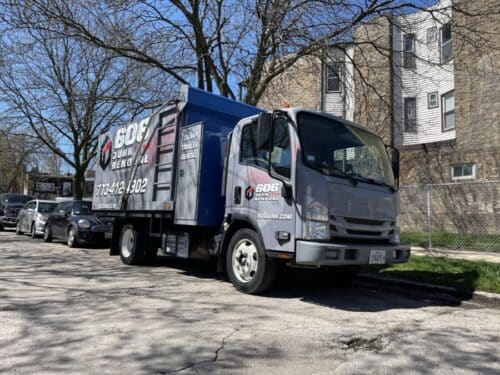
The path to junk freedom doesn’t begin when the truck shows up—it starts the moment you decide to let go. Clearing access is less about tidying up and more about orchestrating an exit route for what no longer serves you. Hallways, stairwells, driveways—these should all be liberated from clutter to ensure smooth hauling without hiccups. Imagine your discarded treadmill jamming a narrow hallway. Now imagine that hallway freed up like a runway. That’s the goal.
While it might seem trivial, clear paths help speed the job, protect your walls from accidental bumps, and prevent lifting delays. It also offers the crew a chance to do what they do best without side stepping lawn tools or tiptoeing around loose extension cords.
Sort the Stuff You’re Ready to Release
Sorting through clutter might seem overwhelming at first, but with a little strategy and a clear goal, it quickly becomes an empowering task. Taking time to divide your junk into meaningful categories not only speeds up pickup day—it also ensures you’re disposing of items the right way. Here’s how to make your cleanup smart, smooth, and sustainable:

- Trash: Items that are broken beyond repair, heavily soiled, or flat-out unusable belong in the trash pile. These are things like busted lawn chairs, crumbling particle board furniture, or soggy boxes from the basement flood. When it’s clear that something serves no function and can’t be repurposed, let it go without guilt—your space will thank you for the breathing room.
- Recyclables: Not everything needs to go straight to the dump. Cardboard, paper, metals, and some plastics can be recycled instead of wasted. Electronics like old laptops or broken toasters often contain recyclable materials too. By sorting these out ahead of time, you reduce environmental impact and save space in the landfill. Just be sure to double-check your local recycling guidelines first.
- Donations: That old bookshelf still standing strong? Or those extra sets of towels you’ve never used? If it’s clean, usable, and has some life left in it, donate it. Local shelters, thrift stores, or nonprofits are often happy to take in gently used household items, clothing, and small furniture. One person’s castoffs could become someone else’s much-needed treasure.
- Hazardous Waste: Not everything can be tossed with your regular garbage. Items like old paint cans, used motor oil, fluorescent bulbs, and chemical cleaners require special disposal. These can pose environmental hazards if mishandled. Set them aside and contact your local hazardous waste collection site for proper drop-off instructions. It’s a responsible move that keeps your community—and planet—safer.
- Sell or Repurpose: Before you toss that dresser with a missing drawer, consider this: could someone use it for parts? Could you flip it into a bench or shelf? Many items can be sold online, repurposed, or upcycled with minimal effort. What looks like junk might just be hidden potential waiting for a little creativity—or a new home.
Be Honest About the Volume You Have
Estimating the size of your junk pile isn’t just for fun—it determines how smoothly the pickup will go. One small miscalculation can lead to an overfilled truck or added charges. Don’t squint at the heap and guess. Instead, walk around your items. Picture how they stack. Consider odd shapes and density. Those mattresses? Bulkier than you think. A dismantled shed? That’s not just scrap, that’s volume.
Some people underestimate because they fear extra costs. But transparency actually helps. It lets the crew bring the right tools, the correct-sized truck, and enough muscle. They show up prepared, which saves time and sweat. An accurate volume estimate turns your pickup from a shot in the dark into a fine-tuned operation.
Remove Hazardous Items in Advance
Not everything can be tossed in a junk truck. Paint cans with liquid, old propane tanks, corrosive chemicals—they’re not just problematic, they’re potentially dangerous. So before your scheduled pickup, take time to remove hazardous materials. Not only is it respectful to the team showing up to help, but it’s also the law in many areas. Safety isn’t optional—it’s a shared responsibility.
If you’re unsure what counts as hazardous, think beyond obvious threats. Pesticides, solvents, even certain batteries can trigger disposal red flags. Separate these early. Research local disposal centers or call your city’s recycling department. This small act ensures your junk pickup doesn’t turn into a chemical guessing game and keeps everyone, including your neighbors, safe.
Break Down Bulky Items Ahead of Time
Large furniture doesn’t always fit through the door the way it came in. That old entertainment center? It might have entered your home in pieces and will likely need to leave the same way. Disassembling large or complex items ahead of pickup doesn’t just save time—it prevents headaches. Removing legs from tables, breaking down frames, or unhooking modular shelves can be the difference between a seamless exit and a scratched doorway.
It’s not about doing the hauler’s job—it’s about enhancing efficiency. Smaller parts mean faster load times and safer handling. It also reduces the chances of accidental breakage during removal. If tools aren’t your thing, don’t stress. But anything you can safely take apart helps turn your junk pickup into a precise and professional effort.
Keep Small Items Contained and Ready
When it comes to junk, the little things can turn into big problems. Scattered books, tangled cords, mismatched kitchenware—they’re all easy to forget until the last minute. Bagging or boxing small items ensures they don’t get left behind or spill across your lawn mid-removal. Think of containers as the final wrapping on the junk you’re ready to discard.
Not everything requires a fancy bin. Reusable grocery bags, cardboard boxes, even storage totes can do the trick. By gathering smaller pieces in advance, you prevent chaos and make life easier for the team doing the lifting. Contained junk also takes up less space, which means more room for bulky items and faster hauls. A little prep here goes a long way.
Check for Hidden Items Before the Pickup
The items you plan to toss might not be all that’s hiding in your shed or storage room. Before the junk team shows up, double-check spaces where odds and ends tend to vanish. Behind furniture. Under shelves. Inside cabinets you haven’t opened in years. These are the realms where forgotten relics love to hide and surprise you at the last moment.
There’s something oddly satisfying about a final sweep. It’s the last walk-through before change arrives. Maybe you find something you forgot you had. Maybe it’s a reminder of why you’re decluttering to begin with. Either way, this small act ensures nothing worth discarding—or keeping—is left behind. It’s less about junk and more about closure. Take the moment. Do the sweep.
Secure Pets and Keep Kids at a Distance
It’s pickup day, the team has arrived, and all systems are gone—except your dog bolts out the door or your toddler decides the junk pile is a playground. It’s essential to secure pets and keep children safely away from the work area. Not only does this ensure their safety, but it also helps the crew stay focused and undistracted.
Heavy lifting, fast-moving haulers, and unpredictable item shifts aren’t safe for curious little hands or fast paws. Create a barrier, assign a distraction, or plan a short outing while the crew works. Even if your pet is friendly, the bustling environment could cause unnecessary stress. A little planning here brings peace of mind and lets the professionals get the job done swiftly and safely.
Communicate Special Instructions Early
Not all junk pickups are created equal. Some jobs require stair navigation, while others involve tight alley access or unusual scheduling quirks. If your pickup has any unique factors, share them with the team beforehand. Communication clears the fog, enabling a smoother, faster experience for everyone involved.
Whether it’s an old fridge that needs to be carried from the attic or items waiting behind a locked gate, the more your haulers know in advance, the better prepared they’ll be. Last-minute surprises can stall the process or even require rescheduling. By setting expectations early, you transform your pickup into a coordinated event instead of a rushed scramble. That extra phone call? It’s always worth it.
Confirm Your Appointment and Be Present if Needed
Life gets busy. Calendars blur. But your junk pickup isn’t the time for oversight. Confirm the date and time a day before, and try to be present if the company recommends it. Some removals may require quick decisions about what stays or goes, or answers to questions only you can provide. Being available makes a difference.
If you can’t be there, designate someone who knows the plan. The haulers need access, instructions, and sometimes approval. Your presence—or your proxy’s—can prevent mix-ups, delays, or accidental removals. Treat the appointment like a delivery: you wouldn’t miss the arrival of something important, so don’t miss the departure of something you’re ready to let go. Coordination ensures everything unfolds without confusion.
Conclusion
When you’re gearing up for a junk pickup, it’s more than just tossing unwanted items to the curb—it’s about reclaiming your space and resetting your environment for what’s next. Whether you’re clearing out after a renovation, preparing for a move, or just tackling long-overdue clutter, a little preparation goes a long way. Organizing your items, identifying what stays and what goes, and making sure everything is accessible can make the process quicker and smoother.
If you’re in the Chicago area and need a reliable, professional team to handle the heavy lifting, reach out to 606 Junk Removal and Dumpster Rental. Based in Chicago, IL, they offer fast, friendly, and affordable service. Call 773-412-4902 or email info@606junk.com to schedule your pickup.
